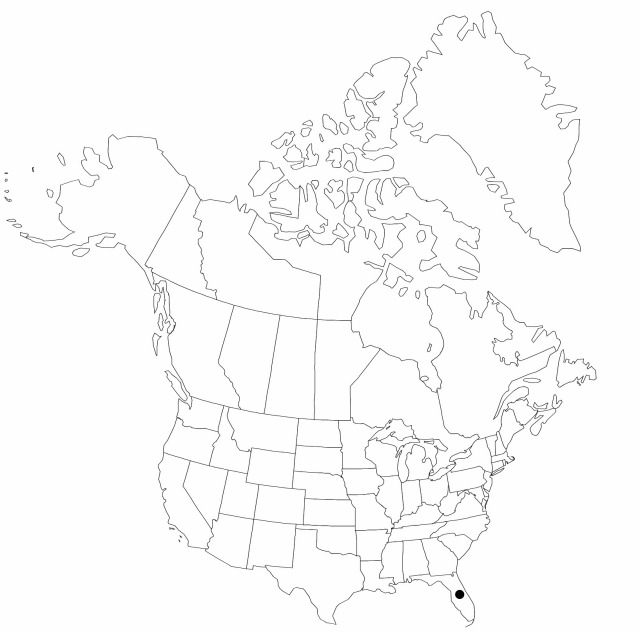Rhynchospora megaplumosa
Lundellia 3: 20, fig. 1. 2000.
Plants perennial, cespitose, 20–90 cm, base pale brown to dark brown; rhizomes absent or compact, knotty, scaly. Culms erect to arching-ascending, leafy, wand-like. Leaves mostly basal, few and increasingly distant upculm, shorter than scape; blades narrowly linear, concave proximally, (1–)2–3 mm wide, tapering and increasingly involute-sulcate proximally, margins scabrid, apex triquetrous, tip narrow but blunt. Inflorescences: clusters 1(–2), if 2 then close together, dense, broadly turbinate to hemispheric; primary leafy bracts linear, stiff, exceeding clusters. Spikelets light brown, narrowly lanceoloid, 8–10 mm, apex acuminate; fertile scales lanceolate, convex, (6–)7–8 mm, apex narrowly acute, low midrib short-excurrent or not. Flowers: perianth bristles 6, excurved, plumose from base to midbristle, 5–7.5 mm, antrorsely barbellate to tip. Fruits 1–2 per spikelet, 2.3–2.6 × 1.1–1.2 mm; body brown, short-stipitate, tumidly obovoid, subterete, 1.8–2 mm, margin low, broad; surfaces interruptedly transversely wavy-rugulose; tubercle broadly and concavely conic, 0.5–0.7 mm high, base shallowly 2-lobed, discoid, abruptly narrowed to blunt tip.
Phenology: Fruiting spring–fall or all year.
Habitat: Sands and sandy peats of pine flatwoods scrub and flatwoods-sandscrub transition
Elevation: 0–50 m
Discussion
Of conservation concern.
Rhynchospora megaplumosa is local in central peninsular Florida. It often shares habitat with R. intermedia, and it is taxonomically nearest it in series Plumosae. Distinctive are the longer, paler, narrower spikelets, the longer fertile scales, and perianth bristles of R. megaplumosa. In fact, the perianth bristles of R. megaplumosa are the longest known in the series. While the bristles of all other Plumosae are erect, hugging the achene body, those of R. megaplumosa bend outward so strongly that they push away subtending scales; bristles are conspicuously exposed at maturity.
Selected References
None.

